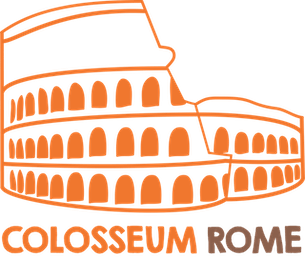
Caelian Hill In Rome (History Facts, Attractions & Tickets)
Looking to explore Caelian Hill in Rome and uncover its rich history and attractions?
This guide provides all the essential details you need for visiting this ancient site. Learn about Caelian Hill's location, its fascinating history, and the notable sights to see, including the Baths of Caracalla.
For those interested in Roman history, delve into the facts and history of Caelian Hill, discover its hidden gems, and find out if you need tickets to discover the top attractions. Start your journey and experience the timeless charm of Caelian Hill!
Contents
- 1 Caelian Hill Rome Tickets You Should Consider
- 2 Location & How To Get There
- 3 Opening Hours
- 4 Caelian Hill Sights To See
- 5 My Tour Itinerary For Caelian Hill
- 6 Interesting Caelian Hill Facts You Won't Hear From Your Tour Guide
- 7 The Significance of Caelian Hill to the Romans
- 8 Caelian Hill Today
- 9 Which Are the 7 Hills of Rome?
- 10 Top Attractions near The Caelian Hill in Rome
- 11 Best Dining Spots On Caelian Hill
- 12 Where To Stay On Caelian Hill
- 13 Caelian Hill History
- 14 FAQs
- 15 Wrap Up
Caelian Hill Rome Tickets You Should Consider
For an enriching experience, consider tickets for the following:
- San Callisto Catacombs & Basilica of San Giovanni in Laterano – This combo tour not only provides a seamless and comprehensive experience but also allows you the flexibility to visit the Basilica of San Giovanni in Laterano, the Cloister, the Holy Stairs, and the Sancta Sanctorum on any day following your visit to the San Callisto Catacombs.
- Baths of Caracalla Tour – A detailed look into the famous Roman bathhouses near the hill, offered by Tiqets.com. Alternatively, for convenience and the best prices, you can book priority entrance tickets through Headout.
Location & How To Get There
The Caelian Hill, or Celio, is one of Rome's famous seven hills. To reach this historic site, refer to a Caelian hill map. The nearest metro stations are Colosseo and San Giovanni, making it easily accessible.
Opening Hours
Many parts of the Caelian Hill are public and open throughout the day; however, several attractions have specific timings:
Attractions | Opening Hours |
Caelian Hill | Public and open throughout the day |
Roman Houses (Case Romane del Celio) | 10:00 AM - 1:00 PM |
Basilica of Saints John and Paul | 7:00 AM - 12:00 PM, 4:00 PM - 7:00 PM |
Villa Celimontana | 7:00 AM - 8:00 PM |
Please check official websites for holiday timings and any seasonal changes.
Caelian Hill Sights To See
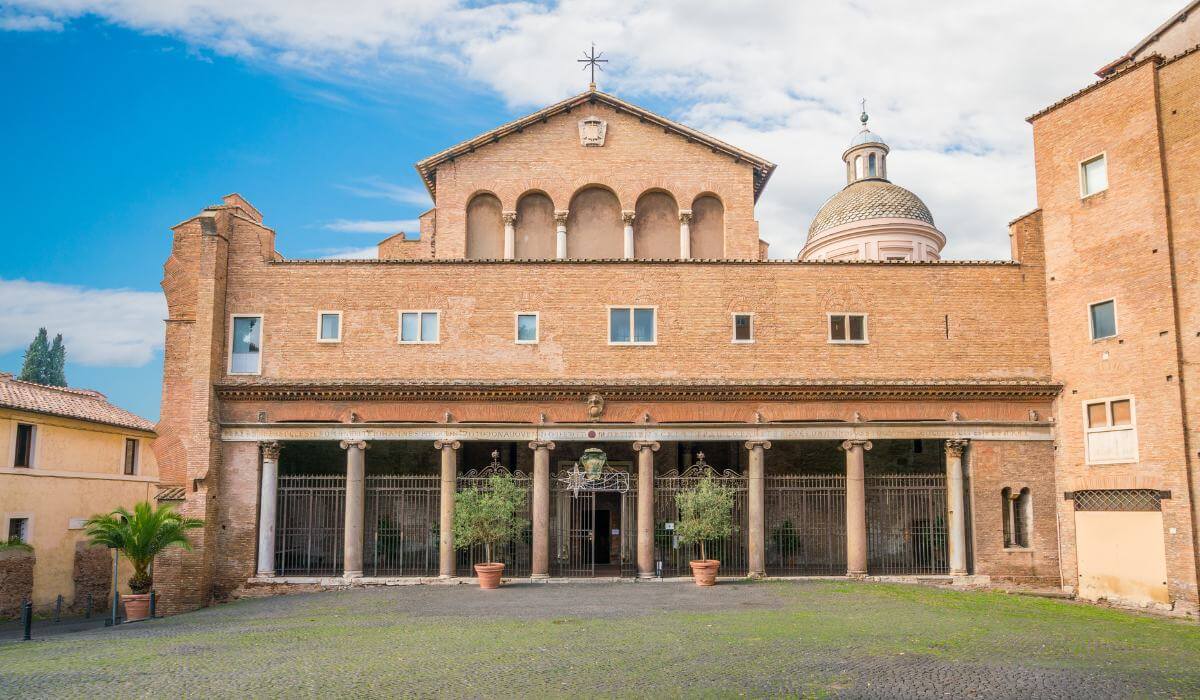
The Caelian Hill, known as “Celio” in Rome, has an abundance of historic sites, monuments, and intriguing attractions.
Embark on a journey as you stroll on its cobbled streets, discovering the best this hill offers and hearing echoes of the past.
Basilica of Saints John and Paul on the Caelian Hill
This basilica is the epitome of architecture dedicated to Christian martyrs John and Paul. The church stands over a complex of ancient Roman houses, the “Case Romane del Celio,” displaying intriguing mosaics and frescoes from the early Christian era.
Baths of Caracalla Caelian Hill
Situated near the Caelian Hill, the Baths of Caracalla are among Rome's most magnificent ancient structures.
These vast public bathhouses, replete with intricate mosaics and sculptures, give a glimpse into the Romans' luxurious life during the Empire's peak.
Battle on the Caelian Hills
The historic battleground where Romans once clashed, this site echoes the tales of heroism and strategies.
Though no monument stands in its memory, the mere thought of warriors battling on these grounds adds a layer of intrigue to the hill.
Parco del Celio
This public park in the middle of Celio Rome is an oasis of tranquility amidst a vibrant city.
Filled with lush greenery, is the perfect spot for a stroll or a quiet moment of reflection away from the Roman houses, Caelian Hill.
Roman Houses on the Caelian Hill
A fascinating journey into ancient living, the Roman houses (Case Romane del Celio) exhibit layers of history, from Roman residences to early Christian worship spaces.
Frescoes and mosaics still adorn the walls and reveal the mastery of artists of bygone eras.
Oppian Hill
Adjacent to Caelian, the Oppian Hill Rome is part of Rome's Esquiline. It offers panoramic views of the city and the remains of Emperor Nero's Domus Aurea.
Villa Celimontana
In Celio Rome, the Villa Celimontana is a public park with sprawling gardens. The park, home to the Egyptian obelisk and numerous cultural events, is a favorite with locals and tourists alike.
Church of Santo Stefano Rotondo
Renowned for its bespoke circular architecture, this ancient church is a testament to Rome's rich Christian heritage.
The frescoes in the interior depict martyrdom and capture the essence of early Christian beliefs and suffering.
Arch of Dolabella
Constructed in the 1st century AD, this ancient Roman arch stands near the Caelian Hill. It's a showpiece of the architectural feats of Romans and bears the name of Senator Publius Dolabella.
Basilica of San Clemente
Beyond its stunning facades, this basilica in Celio is a lesson in history, from a Roman house to an early Christian basilica and the current church. Its mosaics and frescoes depict history and art for visitors to enjoy.
These historical attractions make Caelian Hill a must-visit destination in Rome. Whether you're a history buff, architecture enthusiast, or an eager traveler, the hill creates a legacy of memories.
My Tour Itinerary For Caelian Hill
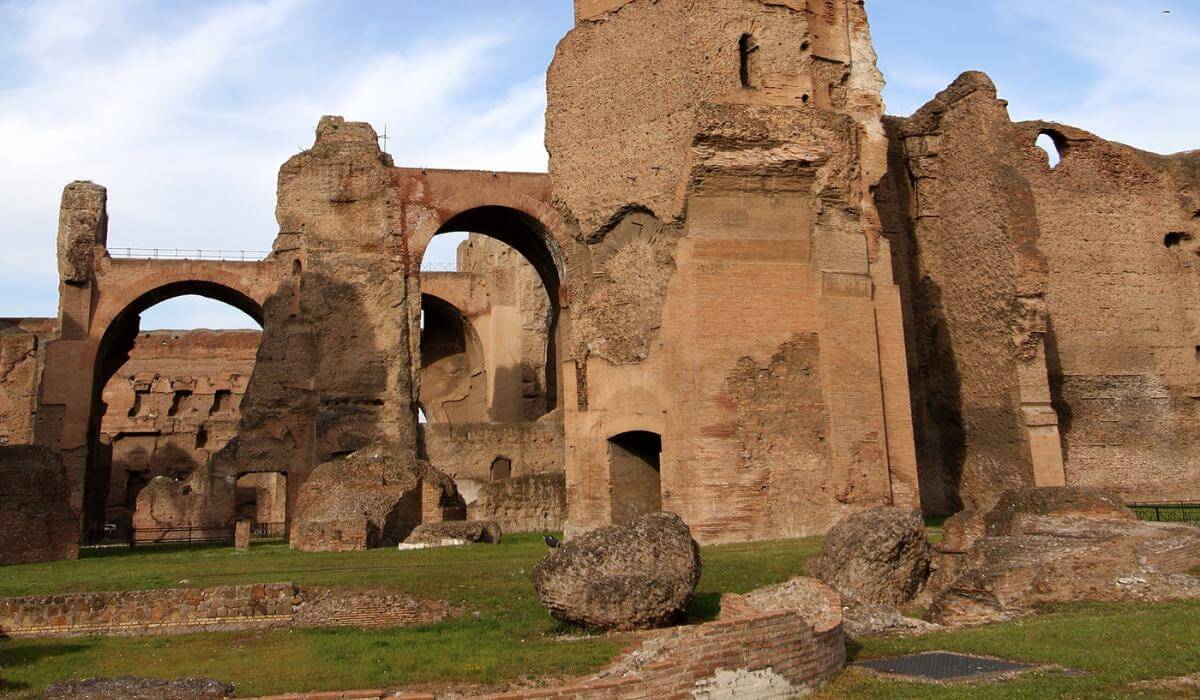
Caelian Hill reminds me of a rendezvous with history and art told through cultural exchange.
Here's my curated itinerary to help you make the most of your time on this ancient Roman hill:
- Start at Villa Celimontana: Begin your journey surrounded by the splendor of the gardens. The serene atmosphere is the perfect setting for Egyptian obelisk and beckons history buffs who can see the invisible connections.
- Visit Roman Houses (Case Romane del Celio): Explore the well-preserved remnants of Roman residences and discover early Christian worship spaces adorned with mosaics and frescoes.
- Move to the Basilica of Saints John and Paul: People come here to learn the true meaning of Christian history. It’s a great view of the church's architecture and the Roman houses it stands upon.
- Arch of Dolabella: Echoes of the Roman architectural craftsmanship stand proudly at Porta Caelimontana, part of the Servian Wall.
- Basilica of San Clemente: Layers of history unfold as you explore another buried ancient Roman house to the site of an early Christian basilica.
- Stroll in Parco del Celio: Refresh yourself from the city's hustle with this quiet and scenic park and discover vistas of its former glory.
- Church of Santo Stefano Rotondo: This intriguing circular structure plays hommage still to the Hungarian Paulines and attracts visitors to view frescoes depicting early Christian martyrdom.
- Experience the Baths of Caracalla: Not exactly on the Caelian, but it's close. The ruins of the second most popular thermal baths remind visitors of Roman luxury.
- End at Oppian Hill: As the sun sets, head to the adjacent hill for panoramic city views and the remains of Emperor Nero's Domus Aurea.
Interesting Caelian Hill Facts You Won't Hear From Your Tour Guide

The Caelian Hill in Rome is a fascinating area with a rich history that often goes overlooked.
Here are some interesting facts about the Caelian Hill that you might not hear from your tour guide:
- Roman Houses Beneath Churches: Several churches on the Caelian Hill, like the Basilica of Saints John and Paul, are built over ancient Roman houses.
- Caelian’s Name Origin: The hill's name, “Caelian,” comes from “Caelius Vibenna,” an Etruscan leader who supposedly settled on the hill during Rome's early days.
- Ancient Hospital: The hill was home to the world's earliest recorded public hospital, founded by Emperor Claudius.
The Significance of Caelian Hill to the Romans
Caelian Hill Rome, positioned within the city center, holds a profound importance for Romans. Regarded as one of the prominent hills of ancient Rome, it retains its strategic, cultural, and religious status.
Even early Roman citizens coveted the residential zone, and became a hub for the elite and significant religious institutions. The Caelian Hill hills' prominence magnified since and secured its place in Roman history and civilization.
Caelian Hill Today
Today, Caelian Hill is an amalgamation of Rome's historical past and future.
As a desirable location for many, it has become a quaint mix of houses and modern buildings. The neighborhood seamlessly integrates Rome's ancient charm with the city's contemporary life.
Which Are the 7 Hills of Rome?
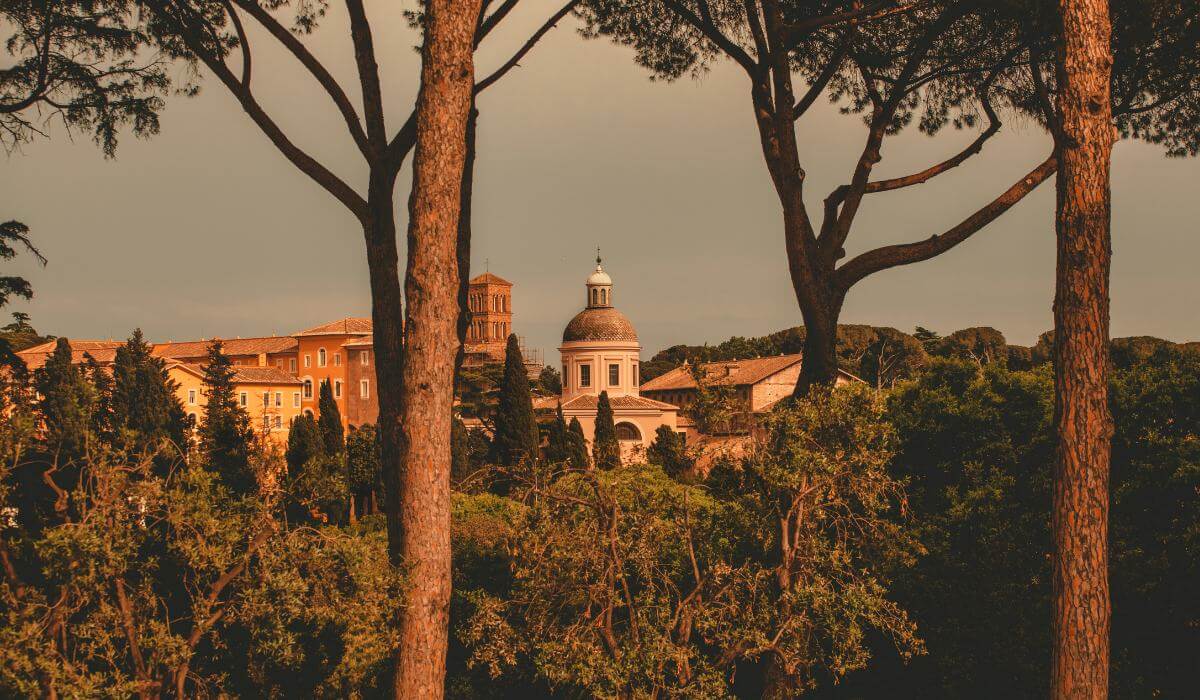
Rome, often dubbed the “City of Seven Hills,” is nestled among a collection of hills that historically fortified its stature.
Here's a snapshot of these illustrious hills:
1. Palatine Hill
Palatine Hill is Rome's birthplace and begins with legendary tales of Romulus and Remus. Dominating the city, it offers panoramic views and is vital in Roman mythology.
2. Capitoline Hill
Sitting beside the Roman Forum, Capitoline Hill has been the city's administrative heart since antiquity. Today, it’s home to the remarkable Capitoline Museums.
3. Aventine Hill
Characterized by serene gardens and beautiful churches, Aventine Hill remains a peaceful respite from the city's bustle and offers a secret keyhole view of Saint Peter's Basilica.
4. Quirinal Hill
Once home to Roman temples and the residence of Roman emperors, today, Quirinal Hill is the official residence of the President of Italy.
5. Viminal Hill
The smallest of Rome's seven hills houses significant buildings like the Termini Railway Station and the Baths of Diocletian.
6. Esquiline Hill
With treasures like the Santa Maria Maggiore Basilica and expansive public gardens, Esquiline Hill represents the diverse architectural wonders of Rome.
7. Caelian Hill
The focal point of our discussion, Caelian Hill 7 hills of Rome, housed nobility, monks, and average Romans for centuries. The Caelian Hill, seven hills of Rome, combines ancient structures harmoniously with the city's modern evolution.
Top Attractions near The Caelian Hill in Rome

After exploring the historic Caelian Hill, you’ll find plenty of fascinating places nearby. From ancient ruins to peaceful gardens, there's a lot to see just a short walk away.
Here are some of the top attractions near Caelian Hill worth checking out.
- Villa Celimontana – Located right on Caelian Hill, this lovely park offers a relaxing escape. Stroll along its shaded paths, admire the gardens, and spot the ancient sculptures and even an old Egyptian obelisk among the greenery.
- Basilica of San Clemente – Just a few minutes away, this church has layers of history. You can explore its different levels, from a 12th-century basilica to an older 4th-century church, and even a Roman house and temple below.
- Santo Stefano Rotondo – This round church on Caelian Hill is one of Rome’s most unique. Its ancient architecture and frescoes depicting early Christian martyrs offer a quiet, reflective experience.
- Colosseum – A short walk downhill takes you to the iconic Colosseum. Imagine the roaring crowds and gladiator battles that once took place here. Its size and history remain impressive, even if you’ve seen it before.
- Arch of Constantine – Right next to the Colosseum, the Arch of Constantine celebrates Emperor Constantine's victory. It’s worth a visit for its detailed carvings and as a great spot for photos.
- Palatine Hill – Across from the Colosseum, Palatine Hill is a lush area with amazing views of the Roman Forum. Wander through the ancient ruins and gardens where emperors once lived, and take in the history.
- Baths of Caracalla – About a 15-minute walk from Caelian Hill, these ancient baths (see tickets here) give a glimpse of Roman luxury. The massive ruins are impressive, and in summer, the site hosts outdoor performances.
- Basilica of Santi Giovanni e Paolo – This charming basilica, located nearby, sits above the former homes of two early Christian martyrs. Explore the underground Roman houses to get a sense of everyday life in ancient Rome.
With so many great attractions close to Caelian Hill, you can easily spend the day exploring Rome’s history and hidden gems. There’s always something new to discover just a short walk away.
Best Dining Spots On Caelian Hill
Indulge in authentic Roman cuisine at these sought-after eateries:
- Naumachia – Savor traditional Italian dishes in a cozy setting, offering an array of authentic pasta and meat specialties–just like mama used to make.
- Trattoria Pizzeria Luzzi – A classic Roman trattoria, it serves delicious pizzas and pasta dishes, perfect for a casual meal and an unforgettable ambiance of Italian style.
- Li Rioni – Step into a rustic and quaint ambiance and enjoy a slice of some of the best wood-fired pizzas in Rome with a tantalizing aroma accompanied by Lazio wines.
Where To Stay On Caelian Hill
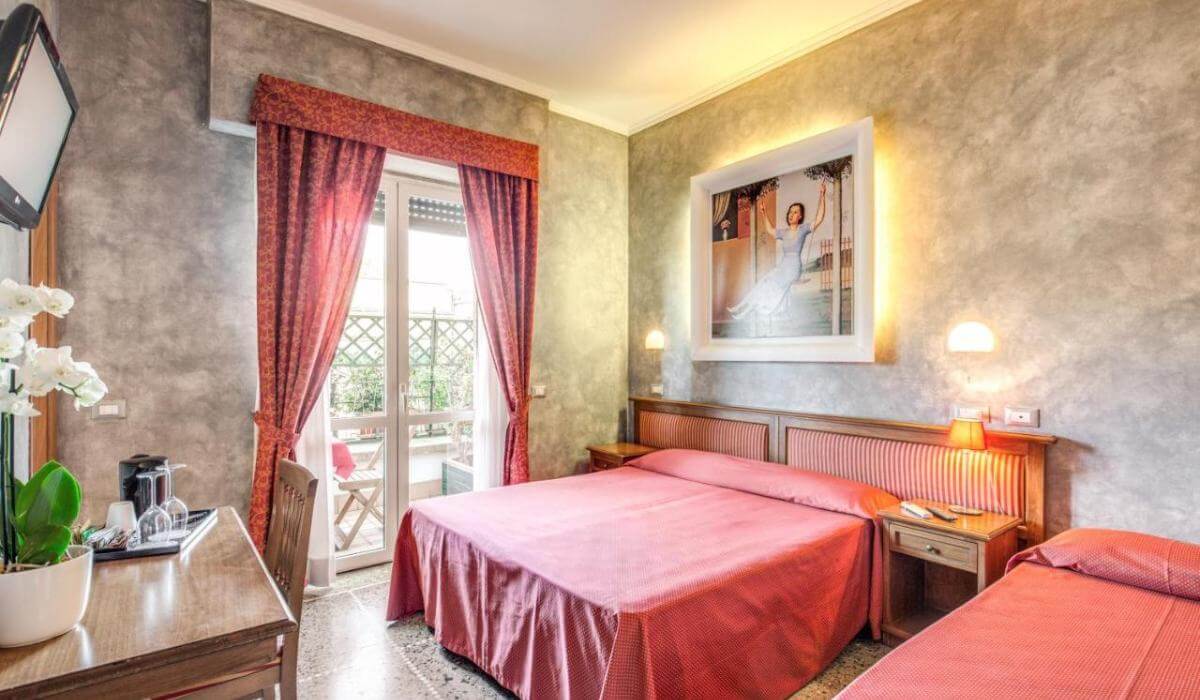
For those wishing to book accommodations close to the Caelian Hill, here are three options for different budgets, handpicked from Booking.com:
- Domus Caracalla – A chic bed and breakfast boasting modern amenities. It's a short walk from the Baths of Caracalla and other attractions.
- Marco's Apartment Colosseum – Situated in close proximity to the iconic Colosseum, this charming apartment promises a stay immersed in the rich history and culture of the Eternal City.
- Suite Imperiale Colosseo is strategically located near several popular points of interest, including the San Giovanni Metro Station, Vittorio Emanuele Metro Station, and Porta Maggiore.
Caelian Hill History

The Caelian Hill Rome, or “Celio,” is a notch on Rome's legendary history and reflects the story of Christianity intertwined into the city's essence and the spirit of its people.
These historical effigies and revered icons, like the Caelian Hill Ancient Rome, spawned the evolution of architectural prominence. Its famous hills layer the fascinating history that shaped the world and are on display.
Experience Rome stress-free with the 🎟️ Turbopass, which provides fast entry to over 50 attractions, including the Colosseum and Vatican. It also covers public transport and airport transfers, making your visit more convenient. Available for 1 to 7 days. Find everything you need to know in my Turbopass Rome review article.
FAQs

These frequently asked questions help you understand Caelian Hill and Rome's landscape.
Why is the Caelian Hill important?
Caelian Hill is a significant UNESCO World Heritage Site and is renowned for its history, architecture, spiritual basilicas, and insights into early Roman life.
What is the most important hill in Rome?
The Palatine Hill is the most important hill and the mythological birthplace of Rome. It’s also a prominent location because of the imperial palaces.
How many hills was Rome built on?
Rome was built on seven hills, each with a unique history and significance.
What is the smallest of Rome's hills?
The Aventine Hill is the smallest of Rome's seven hills. Its appeal is the tranquil ambiance.
How did the Caelian Hill get its name?
The hill’s name comes from aCaelius Vibenna, a historical or semi-legendary figure from ancient Rome.
Are there guided tours available for Caelian Hill?
Yes, we suggest you choose one of the guided tours on our list of Caelian Hill's history, its notable houses, and basilicas.
Wrap Up
Any journey through Caelian Hill is worth exploring regardless of how many days you can pack into your Roman Holiday.
Listen to the tales the whispering walls of the Roman houses share with its inhabitants or take a moment in hallowed basilicas.
To immerse yourself, get personal and book a guided tour to make your adventure memorable, and Buongiorno!
Fanny, an ardent admirer of ancient history and architecture, has been fascinated by the Colosseum since her first visit to Rome in 2012. As a key contributor to the Visit Colosseum Rome blog, she brings her passion for the Roman Empire’s monumental legacy to every article and guide.
